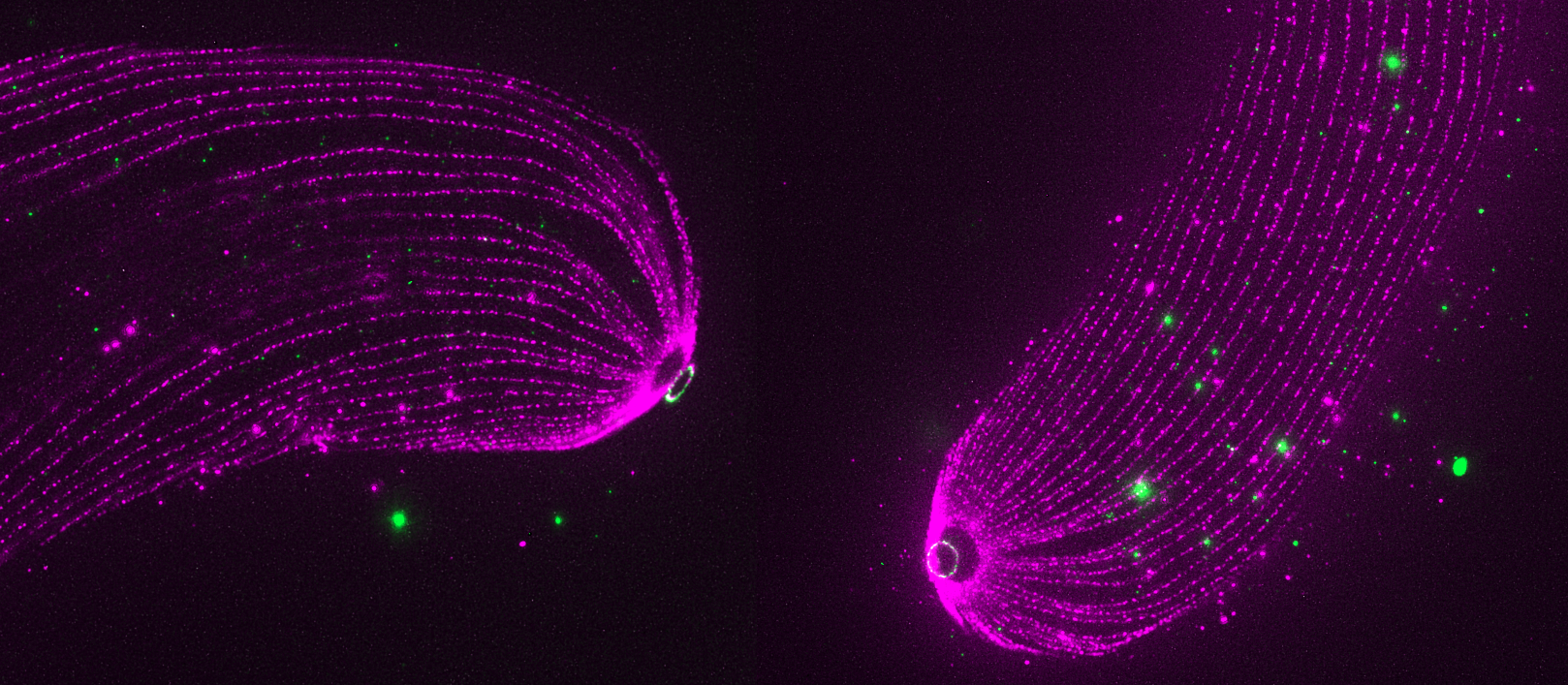Molecular architecture of the conoid

The conoid of Plasmodium, a genus of parasitic protozoa responsible for causing malaria in humans, is a remarkable and intricate structure that we studying in collaboration with the group of Pr. Mathieu Brochet (Medecine Faculty - Geneva).
In this collaboration, we are delving into the structure, composition, and function of the conoid of Plasmodium. Interestingly, it has been proposed that the conoid evolved from flagellar components as demonstrated by the presence of the SAS-6L protein (green, image above), which also localizes to the centriole/cilium complex in other species. Understanding the conoid on both a molecular and architectural level holds significant importance in enhancing our understanding of the evolutionary origins of this organelle. This understanding is essential to ongoing efforts to combat malaria and could lead to the development of more effective treatments and preventive strategies.
Conoid in Plasmodium Ookinetes - See Bertiaux et al. : https://journals.plos.org/plosbiology/article?id=10.1371/journal.pbio.3001020

Project funded by the Fondation privée des HUG
In the news

